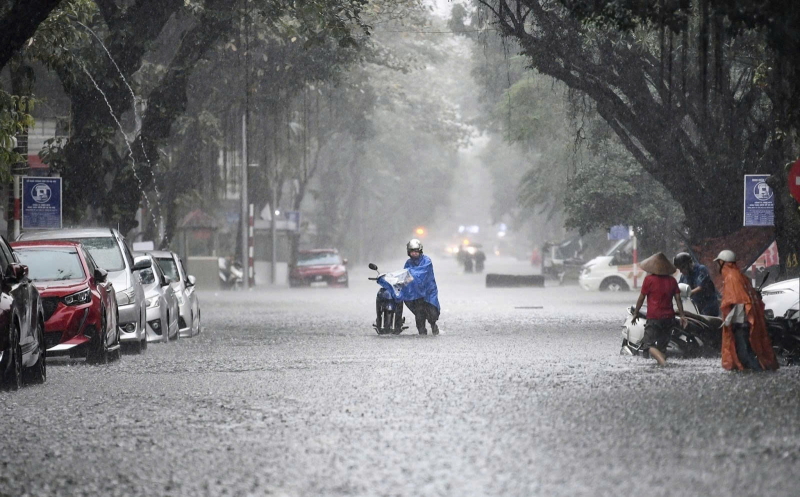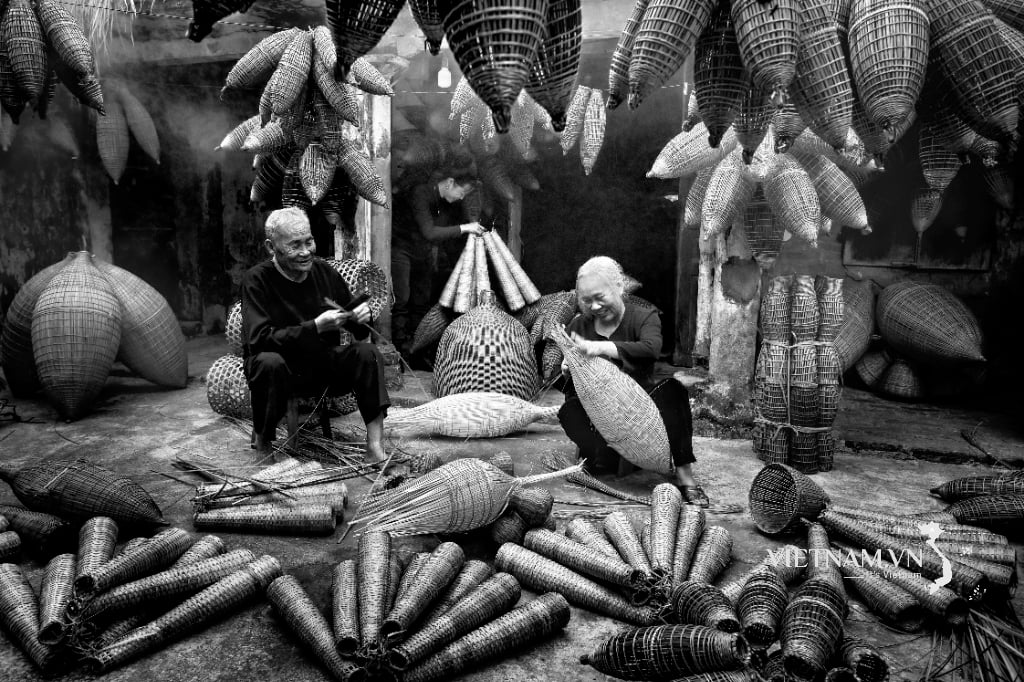In particular, from the night of June 28 to July 2, the Northern region is likely to experience a widespread thunderstorm, in which the midlands and mountainous areas are likely to experience moderate to heavy rain, some places have very heavy rain with forecasted rainfall reaching 150-300mm/period, some places over 500mm.
Along with that is a high risk of extreme weather phenomena such as: tornadoes, lightning, flash floods, landslides, and flooding in low-lying areas.

Meanwhile, the Central region from now until June 28 will have mostly sunny weather. From June 29 to July 2, the weather will generally be little rain, sunny, and hot in some places. The Central Highlands and the South: Today, June 27, there will be rain, moderate rain, and some places will have heavy rain with rainfall of 20-40mm/24 hours, and some places will have over 70mm/24 hours.
From June 28 to June 30: Sunny days, scattered showers and thunderstorms in the evening, no signs of widespread heavy rain. From July 1 to 2: Rain, moderate rain, locally heavy rain with rainfall of 20-40mm/24h, locally over 70mm/24h.
Notably, according to the National Center for Hydro-Meteorological Forecasting, the period from June 21 to July 20 will be a time of strong weather fluctuations. In June, the whole country witnessed many extreme weather phenomena, notably storm No. 1 - WUTIP - formed in the East Sea on June 10. Although it did not directly make landfall in Vietnam, the storm's circulation still caused widespread heavy rain, affecting many areas.
In the Central region, heavy rain occurred from the night of June 10 to 13, mainly due to the influence of storm circulation. Localities from Ha Tinh to Quang Nam recorded rainfall ranging from 250 to 550 mm, with some places exceeding 600 mm. Some meteorological stations such as Dong Ha (Quang Tri), Da Nang , A Luoi and Nam Dong (Thua Thien Hue) recorded rainfall exceeding historical records.
The Central Highlands and the South are not exempt from the unusual weather trend. The Northern Central Highlands experienced heavy rains during the same period, with rainfall ranging from 100-200 mm, with some places exceeding 250 mm. At the same time, the heat wave continued in the North and Central regions. Hanoi experienced three heat waves in June, with temperatures reaching 40.6°C at times. Along the Quang Binh to Hue route, the heat wave continued from mid-May to mid-June.
Entering July – the peak of the rainy season – the weather in many regions across the country is forecast to continue to be abnormal. The North and North Central regions are expected to have rainfall 15–30% higher than the average of many years, which means an increased risk of flooding, flash floods and landslides. Meanwhile, the Central and South Central regions are facing 10–20% less rainfall than average, increasing the risk of drought and forest fires.
The average temperature in the North and North Central regions in July is similar to many years ago, while other regions are forecast to be 0.5–1°C hotter. During this time, the East Sea is likely to see one to two storms or tropical depressions – a number that is on par with the average for the same period.
The National Center for Hydro-Meteorological Forecasting also warned that localized heavy rains in the northern and north-central provinces may occur unexpectedly, posing the risk of flash floods and landslides, especially in mountainous and low-lying areas. Thunderstorms, lightning and hail are still present risks during the changing seasons.
Source: https://cand.com.vn/Xa-hoi/cuoi-thang-6-sang-thang-7-thoi-weather-co-nhieu-bien-dong-manh--i772993/







































































































Comment (0)